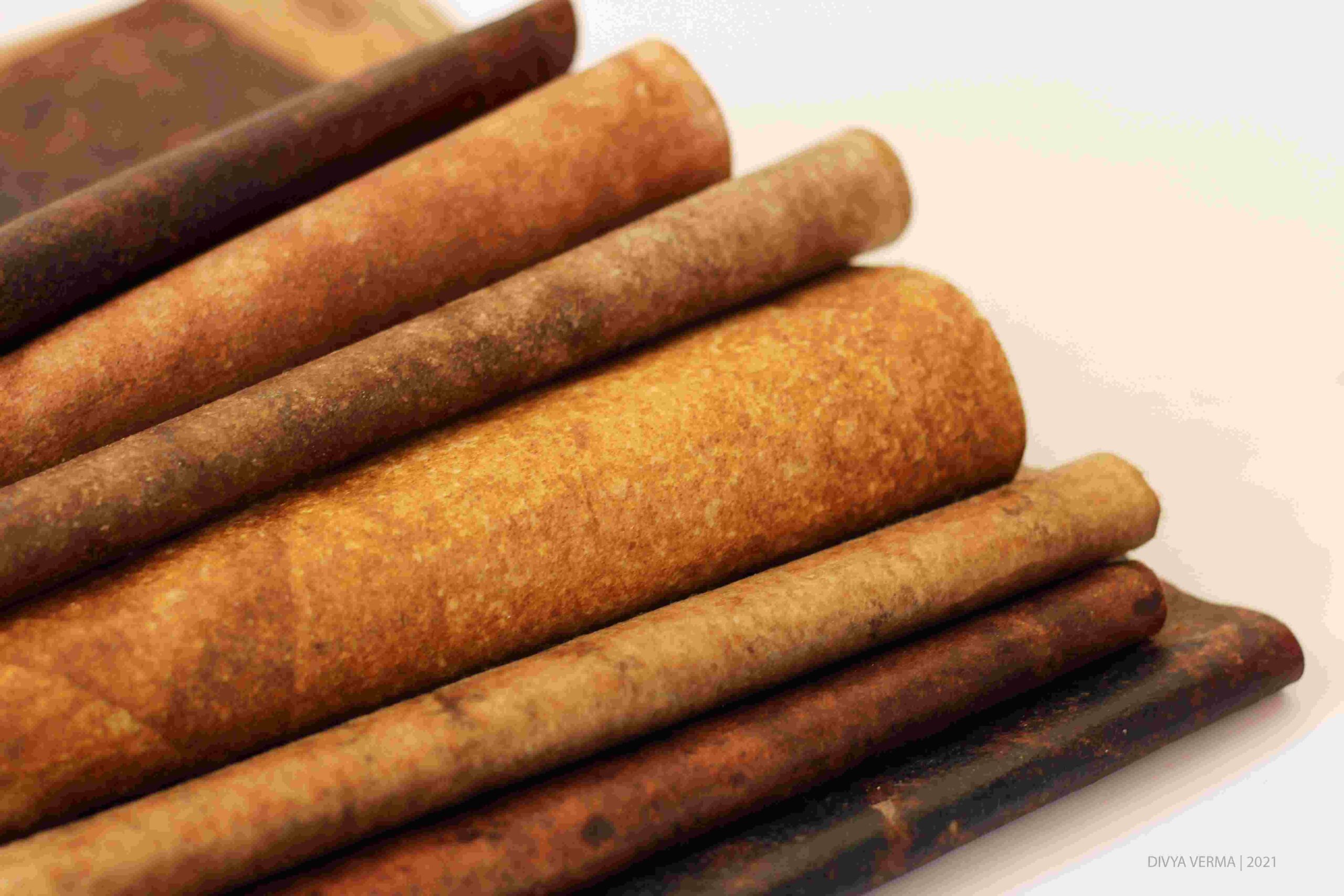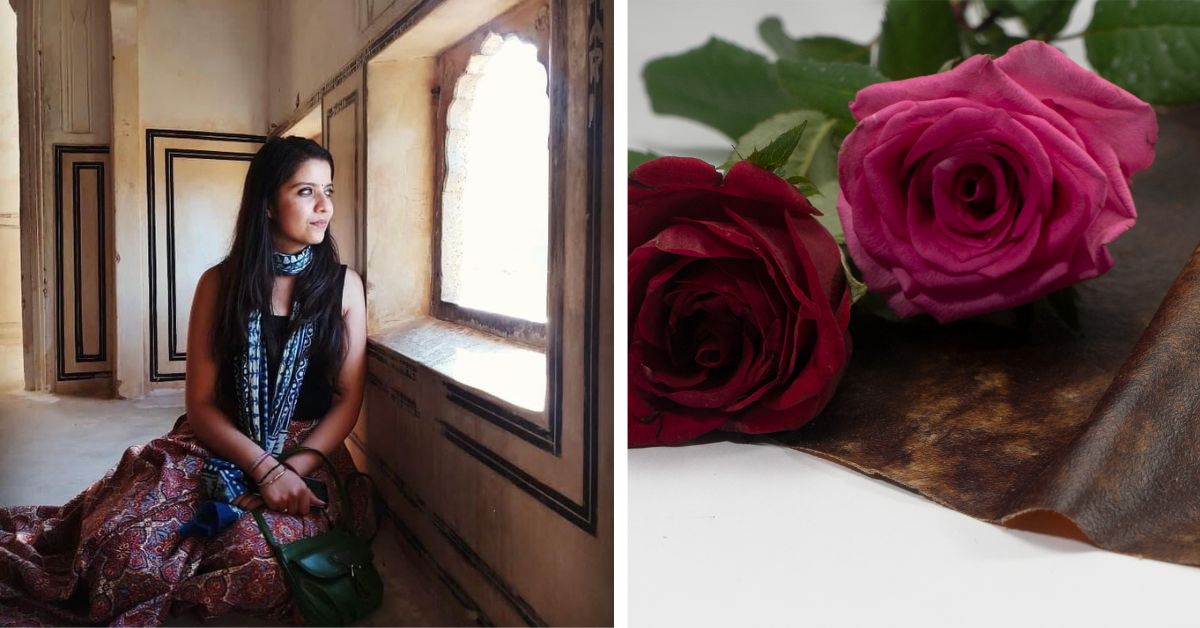When Divya Verma was younger, she observed that in her mother’s kitchen, nothing was really “waste”. Leftover fruit or vegetable peels, uneaten food, or fruit seeds would all eventually find their way into the garden, where her mother would use them to make fertiliser.
As a result, plants bloomed and flourished in that garden, and this carpet of green made Divya fall in love with both nature, as well as the tranquillity it brought.
This is where the roots of sustainability first took shape for the 30-year-old, who is an industrial designer from Rajasthan. Little did she know that one day, this would form the precursor to a milestone project of hers — Kudarat Bioleather.

Developed in 2020, the bioleather, made of a combination of algae and organic waste, is Divya’s attempt to cut down on “white pollution” — the plastic waste left behind in the sea — as well as mitigate the effects of the leather tanning industry.
It resembles animal leather only in the way it looks, but is cruelty-free, waterproof, compostable, and durable, the designer says.
A unique project for sustainability
In 2018, when Divya was at the National Institute of Design, Ahmedabad, she continued to harbour a love for sustainability in every project she undertook. “In my second year at NID, I chose a course that explored new material options and started working on biomaterials such as bioplastic,” she says, adding that at the time, she wasn’t aware of the potential of waste material and biopolymers, or how microbes could make excellent resources.
Her interest in using microbes to build materials stemmed from her Masters in Biological Sciences at BITS Pilani, which she had pursued before the NID course.
“I wanted to incorporate some of my scientific knowledge while designing fabrics and textiles,” she says, adding that in her second year, she began thinking along the lines of sustainable leather.
“When the time came for me to work on a project of my own, I was enthusiastic and sure that it must be in the eco-friendly realm,” says Divya, adding that the idea was to make leather out of microbes and kitchen waste. This would provide a sustainable alternative to the usual animal-based leather.
“Through my research and insights on sustainability, I had become aware of the tremendous impact that tanning in the leather industry had on the planet, and thought, why not work around this?”
But as she began work on the idea, the advent of the COVID pandemic brought things to a sudden halt. With her access to a laboratory cut off, the only space left to experiment in was her home kitchen.
Creating leather in the kitchen
As Divya recounts, the next several months were filled with excitement at having a new prospect, nervousness at whether the kitchen space would be enough, and passion at having chosen to do something not many would.
The main challenge, she says, was having access to machines.
“In a laboratory, there are so many machines, each specific to the task at hand. But despite a lack of these, I did not give up. I started exploring different raw materials and waste peels, but would fail several times,” she says, adding that at one point, she even tried to use leaves to try and make bioplastic.
During this time, Divya also read research papers on developments in the space of bioplastics, as well as on materials that were proving to be good.
“There are a number of alternatives that I came across, such as corn starch, milk protein, etc. One of these was algae. I did a comparative analysis of the pros and cons of different materials and came to the conclusion that algae would be the best one to go ahead with,” she says.
This, she says, was due to a number of reasons.
Why algae?
“Research shows that algae does not require a lot of land and water resources to grow and it is also good at absorbing carbon dioxide, hence making it a sustainable raw material,” she says.
A study aimed to understand how bioplastics perform in comparison to traditional plastics found that algae-derived alternatives have identical properties and characteristics as the latter. Moreover, while comparing different biological alternatives for polymer production, it was found that algae serves as a better candidate for bioplastic production as it does not compete with other plants for food while growing.
The study also found that in comparison to sago, corn starch etc, algae exhibits better water resistance and mechanical properties.
Having decided on algae as the choice of material, the next challenge was to source it, which Divya says wasn’t so tough.
The natural fibres were sourced from Cheliya, Kerala, Rajasthan and Gujarat. “The seaweed,” she explains, “is very versatile, in that it is often used in desserts, and even in the medical industry. I contacted friends who sent me samples of it from Kerala.”
The plant fibres, too, were sourced similarly. “For the organic material, I contacted friends in Kerala who sent me banana and coconut fibres, while I sourced jute from Ahmedabad and Rajasthan.”
Soon enough, her kitchen counters — cluttered with beakers, flasks and the like — were mimicking a laboratory setup. Divya would often use kitchen machinery such as measuring cups, cutlery, and the weighing balance to conduct her research.
After a year filled with trial and error, Divya says she learnt the tricks of the trade and was able to come up with a prototype towards the end of 2020, which she named Kudarat Bioleather. There were two key ingredients that made this up — algae and organic waste. Alongside, she added discarded nutshells, eggshells and woodchips.
Versatile and tough
Dr Ketankumar Vadodaria, faculty at NID Ahmedabad and Divya’s guide for the project, tells us that using algae was a wise choice.
“Due to the abundance of algae in the sea, it is a great material to use for making alternatives to animal-based leather. Not only is it eco-friendly, but it also proved efficacy as a biodegradable polymer. Once it degrades, it becomes a part of the ecosystem once again, causing no pollution.”
As for how combining the algae with kitchen waste has helped enhance the properties of this leather, Dr Vadodaria says it is science at its best.
“We often see in science that when two materials are combined to make a third, the properties of both the materials come together and almost complement each other. In this case, kitchen waste comprises peels of vegetables and rinds of fruits. This is abundant in fibre, and thus in the leather produced, we see the quality of strength and durability. In addition to this, a fragrant aroma and colour is imparted to the leather due to the fruit dyes.”
Divya is in agreement with the durability of the algae. She adds that she was nervous when she’d given the leather to the artisans in Ahmedabad to perform zardosi, as it involves tying the material to a wooden frame tightly. “I was scared that the material would tear or break, but it did not show any signs of damage. It is strong.”
Divya has applied for a patent, which is in process. She is also on her way to developing more prototypes and coming up with ways to process the material further.
Currently, she is testing the material for tensile strength as when it comes to bioleather, the thickness can vary. However, she says in her personal opinion, it is better than animal leather for more reasons than one.
“While the texture is similar to that of animal leather, it is of course a better alternative due to its sustainable quotient. Another feature of it is that it does not have the usual pungent smell that animal leather tends to give off. This one has a fragrant smell.”
She says that for the colour, she is using plant-based dyes such as rose, marigold flowers, and walnut shells.
Divya received recognition for her work when she was announced as the national runner-up for the James Dyson Awards in September this year. The award aims to celebrate, encourage and inspire designers with new problem-solving ideas.
She was also the winner at The Green Product & Concept Award 2022, one of the top 5 at CII Young Designer Awards 2021 (Product Design Category) and achieved the fifth rank in Green Concept Audience awards 2022.
Sources
Algal biopolymers as sustainable resources for a net-zero carbon bioeconomy by Elsevier, Published in January 2022.
Nature’s fight against plastic pollution: Algae for plastic biodegradation and bioplastics production by Elsevier, Published in October 2020.
If you found our stories insightful, informative, or even just enjoyable, we invite you to consider making a voluntary payment to support the work we do at The Better India. Your contribution helps us continue producing quality content that educates, inspires, and drives positive change.
Choose one of the payment options below for your contribution-
By paying for the stories you value, you directly contribute to sustaining our efforts focused on making a difference in the world. Together, let's ensure that impactful stories continue to be told and shared, enriching lives and communities alike.
Thank you for your support. Here are some frequently asked questions you might find helpful to know why you are contributing?

